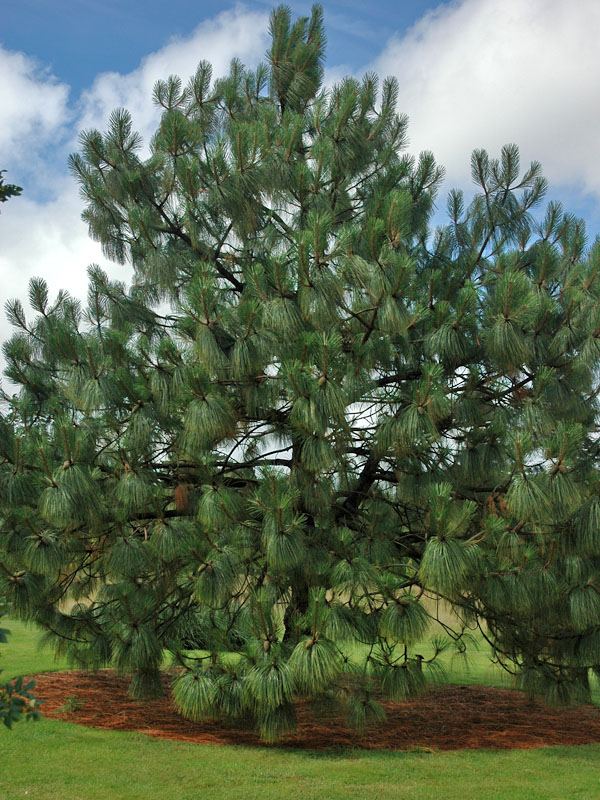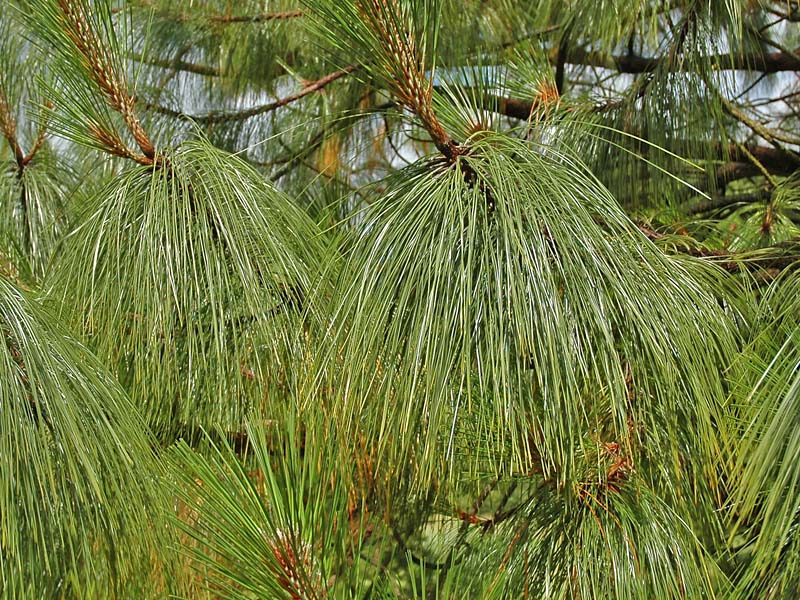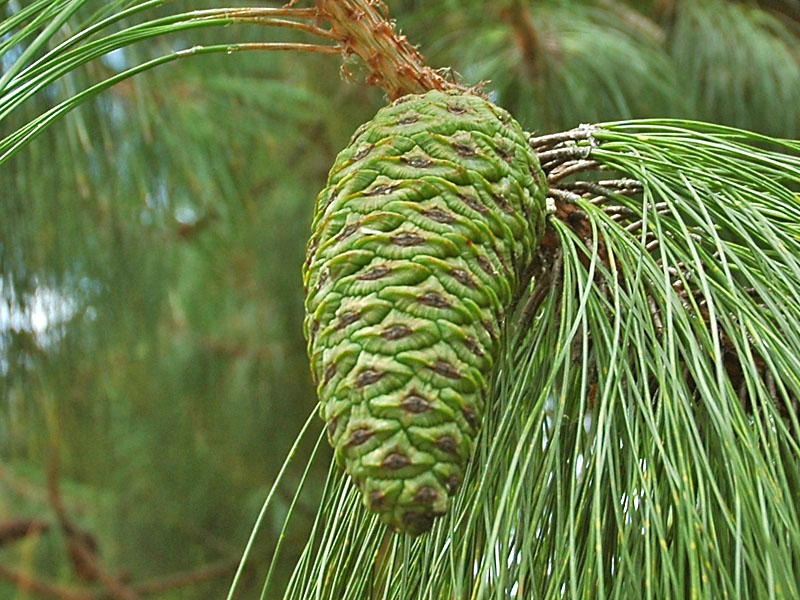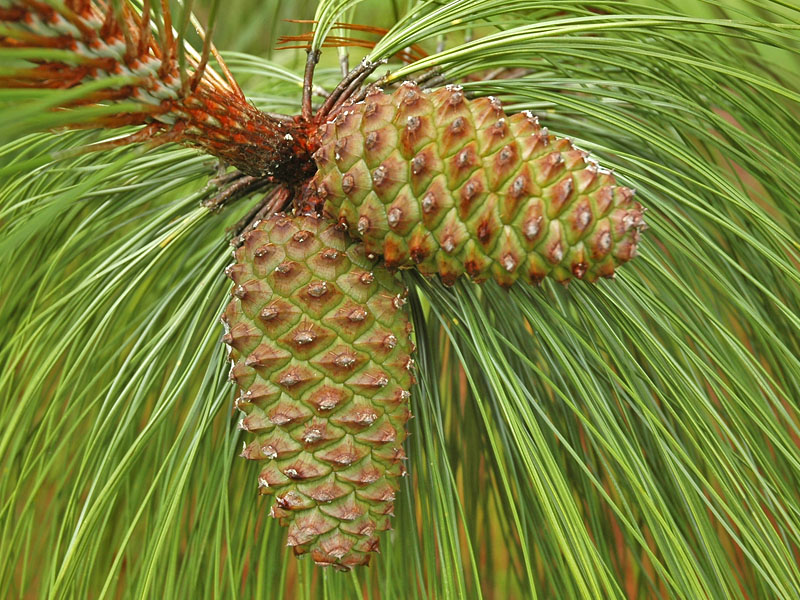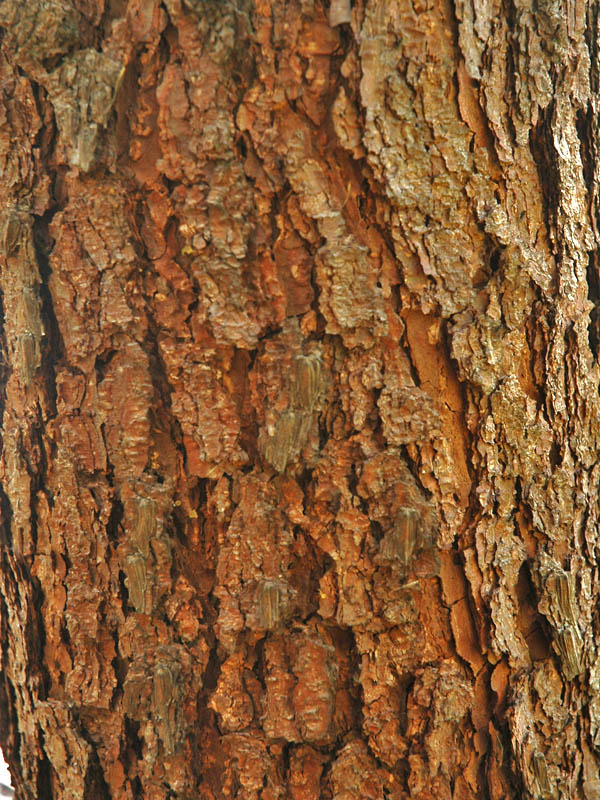| General Description | A large coniferous evergreen found in in the southern reaches of North America, South America and areas of the Southwestern Pacific. It is broadly conical, becoming more of an irregularly rounded shape at maturity and it has been known to grow up to 30 m in height with a spread of 10 m. It has some of the longest needles of its genus varying in length from 17.5-25 cm long. These needles are a blue/green colour and hang down from the ends of the branches giving the tree a pendulous appearance. The mature bark on the tree is a greyish brown with a rough plated surface, and the new growth has a rough reddish brown bark. Pinus montezumae is monoecious and has dark brown cones about 10-15 cm in length and 5 cm wide when closed. It can be propagated effectively through seed or softwood cuttings. |
| ID Characteristic | This tree has very long dark green needles that range from 17.5-25 cm in length. Its cones are dark brown and are 10-15 cm in length and about 5 cm wide when closed. The bark on new growth is rough and reddish brown, and mature growth is greyish brown and roughly plated. Mature specimens can grow up to 30 m in height with a spread of 10 m. |
| Shape | Large, broadly conical, somewhat rounded at maturity. |
| Landscape | Montezuma Pine is a large coniferous evergreen and it is found mostly in forests and on the sides of roads and highways. It is not well suited for small landscape settings due to its size, although in a larger landscape it can be planted as a specimen tree or focal point. It is reasonably tolerant to salt spray making it well suited for plantings on the side of rural roads and highways. |
| Propagation | Pinus montezumae can be propagated through softwood cuttings as well as seed. Seed should be stratified for about 6 weeks at 4°C to improve germination. After stratification seed should be sown on the surface of a growing media with good drainage at about 15°C. Softwood cuttings should be taken in the winter from young trees less than ten years of age. Seedlings should be moved to their permanent location as soon as possible as larger trees will suffer more shock and show minimal growth for several years. |
| Cultivation | Moist well-drained loams with full sun. Drought tolerant once established. |
| Pests | Sawflies and mealy bug. |
| Notable Specimens | Pinus montezumae specimens can be found at Desierto de Los Leones in Mexico, as well as the Missouri Botanical Garden located at 4344 Shaw Boulevard, St. Louis, Missouri. |
| Habitat | Central mountain areas in Mexico to Guatemala at an altitude of 1,829-3,048 m. It grows mostly on the fringes of wood lots and forests but larger mature trees above the canopy can be found in some climax forests. Mature trees are reasonably salt tolerant and are found often on the sides of roads and highways. |
| Bark/Stem Description | Bark is thick, with fairly deep fissures and a rough plated surface. The bark is greyish brown on mature specimens with young trees and new growth being a more reddish brown. Branches are thick and very rough with a much more prominent red colour. |
| Leaf Description | There are 5 needles per fascicle and are clustered around the branches and form a dense whorl of needles at the tips of the branches. They are a blue/green colour and droop from the branches giving the tree a pendulous appearance. Pinus montezumae has some of the longest needles varying in length from about 17.5-25 cm. Needles persist for about 3 years.
|
| Flower Description | The male flowers of Pinus montezumae are arranged in bud-terminal groups, these groups have between 1-5 flowers. The female flowers are arranged on lateral buds and are in groups of 1-3. They are a dull yellow colour, slightly curved, 7-10 cm in length and the males are covered in pollen. |
| Fruit Description | The cones are dark brown, slightly curved, 10-15 cm in length and about 5 cm in width when closed and 7-10 when open, scales are flat and slightly concave. Cones are short stalked and can be found solitary or in groups of 2-3, which are held, erect on the tops of the branches. There is an abundance of fruit/seed in the beginning of spring and end of fall. |
| Colour Description | Foliage is a blue/green colour; there is some variation with some specimens tending to be a slightly brighter green colour with less of a blue tinge. The bark on older growth and mature specimens is a dark grayish brown colour and the bark on young trees and new growth is a reddish brown. Buds are a red/brown colour, flowers are a dull yellow and cones are a dull brown. |
| Texture Description | It is a medium textured tree with rough, fissured, scaly bark and long drooping needles. The needles are fairly soft but the tree produces cones that are rough and slightly spiked. |
